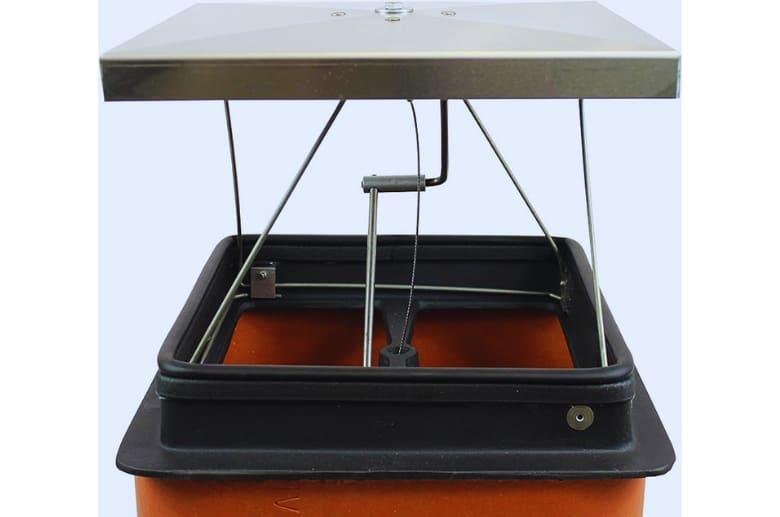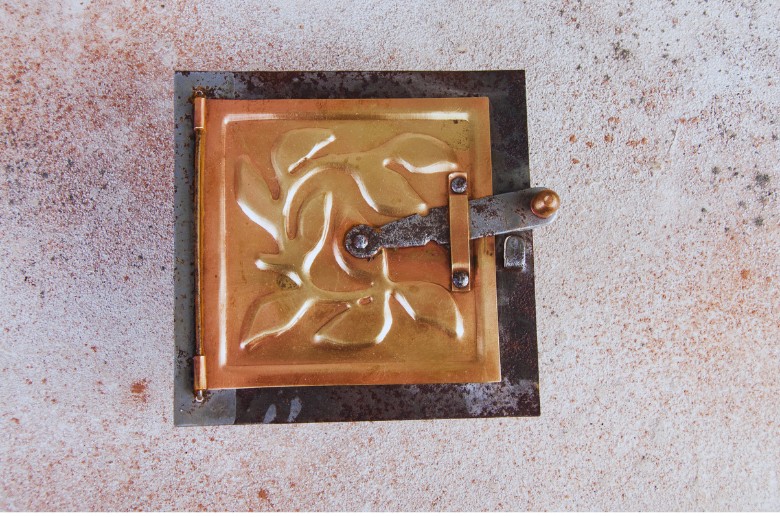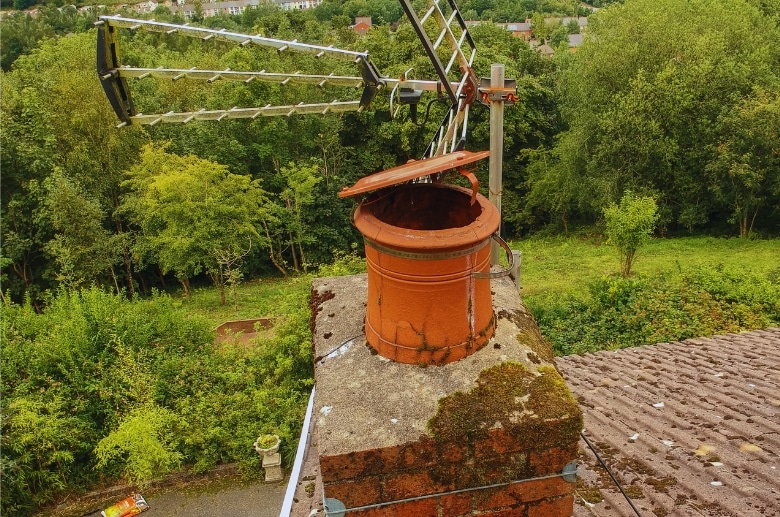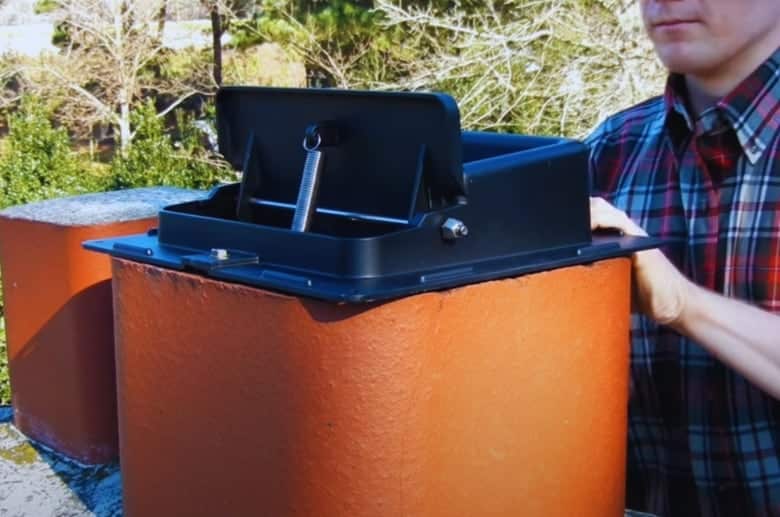A chimney damper in a wood burning fireplace controls the smoke that rises in the chimney. It’s also responsible for ventilation. When it gets damaged or broken, it will become difficult to use the fireplace effectively. This can result in smoke spreading throughout the room or difficulties in controlling the fire.
To identify the problem in your damper, you need to understand how it works and how to maintain it. This makes it easy to know whether the damper needs replacement or maintenance.
How do you remove a damper from a wood burning fireplace? Let’s find out.
The Importance of Chimney Dampers

Chimney dampers may not be the most glamorous feature of a fireplace or chimney system, but they are crucial in ensuring optimal performance and safety. These often overlooked devices control the airflow within the chimney, providing many benefits beyond simply keeping out rain and pests.
Here are some of the benefits of chimney dampers:
- Regulate temperature within the house: Dampers help keep cold air out, improving your home’s overall energy efficiency. Chimney dampers create a seal when the fireplace is not in use, keeping the cold air out. Without the damper, outside air easily enters your home, making your heating system work harder.
- Control the intensity of your fire: Chimney dampers also assist in controlling fire intensity. You can easily adjust how strong the fire burns by adjusting the damper, which changes the amount of oxygen available to the fire.
- Keep smoke away: A damper regulates the temperature in your home and enables the passage of smoke for ventilation. So before you start the fire, ensure the damper is open to allow smoke to funnel through the chimney.
- Protective barrier from pests: If you use a top-sealing damper, pests cannot access your home through the chimney. Most of these models have a mesh-lined cap that helps protect against larger pests.
There are two main chimney damper types: throat dampers and top-sealing (or top mount) dampers. Each type of damper plays a different role.
——
Do You Need to Hire Chimney & Fireplace Expert?
Get free quotes from qualified experts near you. No commitment required!
——
Chimney Throat Dampers

Throat dampers are commonly made of steel, stainless steel, and cast iron. This damper is located just above the fireplace opening, inside the chimney. It resembles a trap door featuring a flap that crosses over the track. As it closes, it creates a metal-to-metal seal.
Top Mount Damper

As its name suggests, this damper sits on top of the chimney, similar to a chimney cap. It keeps pests, debris, and moisture from entering the chimney.
The top mount damper contains a gasket that creates a tighter seal when closed. The seal then connects to the stainless steel chain that goes into the firebox, making it easy to close and shut. This makes the top-sealing damper more energy efficient.
Identifying Damper Problems
If you don’t maintain your damper, it will eventually malfunction. Some of the common issues that may require damper removal or replacement include:
- Faulty operation: smoke is not getting out as it should
- Damper not closing: It allows smoke to escape into your home
- Damper not opening: It affects fireplace operation by blocking airflow
- Damage: Broken, cracked, or fallen damper plate
A malfunctioning damper always means improper airflow through the chimney. It’s vital to seek professional assistance with damper repair and replacement.
How Do You Remove a Damper From a Wood Burning Fireplace (Step-by-Step Guide)
Before replacing the fireplace damper, you need to clean it. Clean any debris in the firebox or where the damper sits, as debris blocks the hinges. You will need the following:
- Gloves
- Safety glasses
- Brush or whisk for cleaning
- Open-ended wrench
- Hat grinder with a cutoff wheel
- A metal can
- Penetrating oil (if needed)
- Ladder (for the top mount damper)
Before you begin, ensure the fireplace is cool and hasn’t been recently used. This will make it easier to remove ashes from the firebox. If you’re unsure about the whole process or lack time to do it properly, you can seek professional assistance.
——
Do You Need to Hire Chimney & Fireplace Expert?
Get free quotes from qualified experts near you. No commitment required!
——
Fireplace Throat Damper Removal
With the aforementioned tools acquired, it’s time to move on to the next steps. Here’s how to remove a fireplace throat damper.
Step 1: Clean out the fireplace
Clean out your fireplace before you start. Use the metal can to remove ashes from the firebox. If you have a fireplace grate, remove it.
Step 2: Clean the damper
Clean the throat damper and surrounding area by using a handheld whisk, broom, or steel brush.
You will have to lie on your back to clean the damper easily. To prevent debris from entering your eyes, you can use safety glasses. If the damper gets stuck, use penetrating/ lubricating oil and spray it on the hinges and handle of the damper plate.
The oil should help free the rusted plate. If you succeed in opening the damper, remove the debris, creosote deposits, and mortar that has fallen on top of the damper. These items may be affecting the damper’s ability to open and close.
Step 3: Remove the damper
If your throat damper is cracked or bent, replace it with a new one. A few bolts are used during installation to attach the damper; you must remove them with the open-ended wrench.
Once the bolts are out, remove the damper plate and replace it. The replacement should be the exact size and shape of the old one to fit securely.
Step 4: Remove the mounting bracket
Fireplace dampers are mounted differently depending on the brand and model size. If you want to install a new wood burning stove with your existing chimney, consider removing the whole damper assembly and bracket to install a new chimney liner.
Most brackets are welded, bolted, or mortared into your chimney. You will need to use a small grinder or metal cutting blade to remove those brackets. Once you’re done with damper assembly removal, you can install your new one.
Removal of the Top-Sealing Damper
The removal of a top-mount damper is different from the removal of a throat damper. In most cases, the top-sealing damper is installed after the throat damper is damaged beyond repair.
While its installation doesn’t need professional help, its removal does require professional assistance, especially during winter.
- Step 1: Get on top of the roof
You’ll need a ladder to climb up onto the roof.
- Step 2: Clean the debris
Clean the debris around the seal and then lubricate all moving parts as you did with the throat damper plate.
- Step 3: Manually move the damper
Open and close the damper a few times to ensure no part is stuck. If it’s cracked or broken, remove it.
When to Consult a Professional

When looking at how to remove the fireplace throat damper plate, you will have to lie on your back on your fireplace to unbolt the plate. By doing so, there is a risk that any debris, mortar, or other items resting on top of it may fall onto you. If not properly handled, it can enter your eyes or ears, or the tools can fall on your chest.
There is also a good chance you may fall off the rooftop if you’re not careful where you step. To make matters worse, you may think you have done the repair, yet you actually only completely blocked the seal plate.
By hiring a professional for installation and removal, your safety is guaranteed.
Not only will a professional ensure your safety, but they will also conduct thorough inspections. Moreover, they can provide expert guidance and assistance if you’re confused about whether you need a fireplace damper or a flue for your system.
Conclusion
It’s crucial to prioritize the upkeep of the damper for both safety and efficiency purposes. The damper serves as a vital component that helps regulate the airflow and prevent the escape of smoke and gasses into the living space.
Ensuring that the damper is in proper working condition can minimize the risk of fire hazards, carbon monoxide poisoning, and smoke damage.
Regular inspections and professional assistance for installation or removal are essential steps to ensure the optimal functioning of your fireplace damper.






